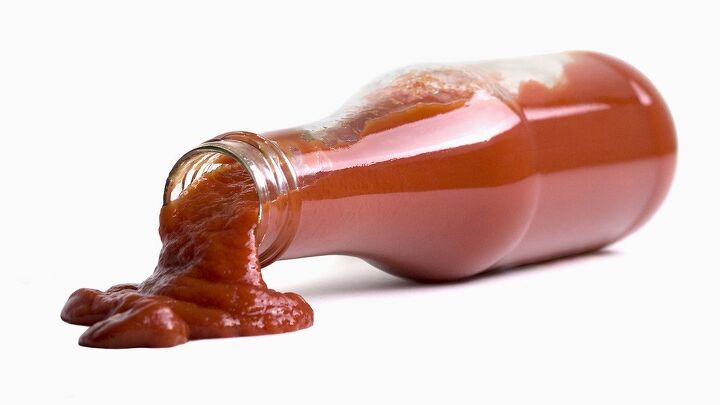Tomfoolery - Rip Van Honda Awakens?
Do you get the feeling that the financial crisis and its aftermath signaled nap time for the supersport division of Honda’s CBR engineering department? Since the last two major revamps – 2008 for the 1000RR, and 2009 for the 600RR – things have been pretty quiet other than mild massaging to the existing CBR supersport models (there was the SP model, but…). On the other hand, maybe it was the redirection of Honda brass to broaden the CBR spectrum by introducing the less performance but more affordable CBR300R, CBR500R and CBR650F.
2015 Honda CBR1000RR SP Review
Taking Big Red’s entire model line into consideration we see that Honda has, in fact, been quite busy introducing a variety of unconventional motorcycles such as the NC700X, CTX700N and NM4, introductory models such as the CB300F, CB500F and CB500X, a couple new baggers, the Gold Wing F6B and CTX1300, the retro CB110, and the unforeseen sales success Grom.
Honda’s not the only Japanese manufacturer that’s shied away from supersport upgrades since the Great Recession. Yamaha’s YZF-R6 has largely been left untouched since 2008, Suzuki’s GSX-R1000 since 2009 and GSX-R600 since 2011. Kawasaki’s reintroduction of the Ninja 636 in 2013 is recent, and so is Triumph’s 2013 revamp of the 675R, as well as MV Agusta’s 2013 introduction of the F3 675.
When it comes to electronics, such as traction control, Kawasaki and Yamaha were early adopters. Honda models remain bereft of TC other than its $184k RC213V-S, and Suzuki only just introduced TC on its V-Strom and Gixxus 1000 models. Comparable European OEMs and some of their models – Aprilia RSV4, Tuono, Caponord; BMW S1000RR, R, XR; Ducati Panigales, Multistradas, Diavels; all MV Agustas – are dripping with electronically adjustable everything: suspension, engine braking, throttle sensitivity, quick-shifters, etc.
Kawasaki’s ZX10R and Yamaha’s new YZF-R1 and R1M have, more or less, kept pace with the Euro bikes, and Kawasaki certainly deserves kudos for last year’s supercharged H2 – a technological tour-de-force in its own right. Honda has been busy incorporating its Dual Clutch Transmission (DCT) on a lot of its bikes, but otherwise, Big Red, oftentimes an engineering vanguard, seems out to lunch when it comes to electronic expectations on motorcycles – especially sportbikes.
Top Ten Reasons Why The 2015 Yamaha YZF-R1 Is Tricker Than An AMA Superbike
Is this about to change? The Africa Twin is coming for 2016 with a first-of-its-kind 6-speed DCT transmission with on- and off-road riding modes – an interesting addition to the Adventure-Touring segment that’s been blossoming for the last half-dozen years. Possibly more interesting are the recent announcements of a Lightweight Supersport, the Neowing leaning three-wheeler and the EV-Cub. Three concept models from the upcoming Tokyo Motor Show.
Certainly more interesting are the recent patent applications Honda filed with the U.S.P.T.O. The first being for a monocoque chassis design utilizing a V-Four engine, and the second for a, get this, supercharged engine! Who knows if it’ll actually come to pass, but the interesting difference between Honda’s patent and Kawasaki’s H2 is the addition of an electrically operated water pump for cooling the supercharged air. In the early ’80s all four Japanese OEMs had a turbo model available, it could happen again only with supercharging this time.
The other patent for a monocoque chassis appears to be a stick in the eye to Ducati, but Honda would most likely utilize a V-Four powerplant (not a Twin), and more traditional mounting (Pro-Link) for the rear shock. Of course Honda will still be called out for copycatting Ducati, but taking an existing design and perfecting it is something Honda and other Japanese OEMs have been doing forever.
Ducati hasn’t won a World Superbike championship since switching to the monocoque chassis. So, maybe, this isn’t a way forward for Honda, but what if Honda wants to show the design can be successful, thus beating Ducati at its own game much like Honda did with the VTR1000?
The wait for a new Honda literbike has gone on just about long enough. Will we see a new V-Four CBR with a monocoque chassis for 2016 or 2017? Hopefully with some RC213V-S sweetness sprinkled in. At least these patents and show prototypes seem to say Honda will soon be back in the superbike fray with something more affordable than the RC213V-S. It’s time for Honda to ketchup. Suzuki too!
A former Motorcycle.com staffer who has gone on to greener pastures, Tom Roderick still can't get the motorcycle bug out of his system. And honestly, we still miss having him around. Tom is now a regular freelance writer and tester for Motorcycle.com when his schedule allows, and his experience, riding ability, writing talent, and quick wit are still a joy to have – even if we don't get to experience it as much as we used to.
More by Tom Roderick







































Comments
Join the conversation
The technology drought in Japan covers ALL the Japanese makers - and extends to their entire product line - look at 450cc MX bikes - MAJOR changes on the KTM 450 almost EVERY year - while Honda did a major overhaul in 2008 and again in 2013 - otherwise all you got was "BNG" Bold New Graphics !!! Look at your recent Sport Adventure Comparison - only the Euros have the Tech goodies now (and charge for it). The Japanese are still selling on "Good enough for the low price".
I really didn't think "tech" was a big selling point for me (aside from ABS). But now that I have 3 EFI modes, traction control, GPI, and a programmable dash display, I really like it and don't see going back to the basics with future bikes. Honda needs to step up.